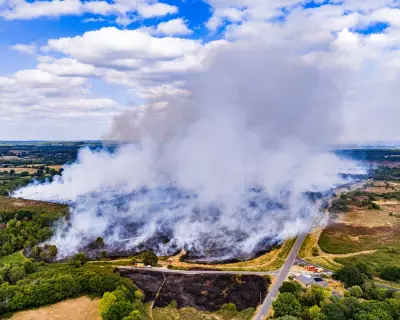
In a startling revelation that could rewrite our understanding of planetary mechanics, scientists have discovered that Earth's solid inner core has been slowing down its rotation relative to the planet's surface since approximately 2010.
The groundbreaking research from the University of Southern California provides compelling evidence that the inner core—a hot, dense ball of iron and nickel roughly the size of the Moon—is now moving more slowly than Earth's outer layers for the first time in decades.
Unravelling Planetary Mysteries
Professor John Vidale, co-author of the study published in Nature, explained the significance: "When we first detected this slowdown, we were quite astonished. The inner core had been moving slightly faster than the rest of the planet for years, but now it's lagging behind."
The research team analysed seismic data from 121 repeating earthquakes that occurred between 1991 and 2029 near the South Sandwich Islands in the South Atlantic Ocean. They combined this information with nuclear tests conducted by the Soviet Union, France, and the United States, creating an unprecedented dataset of inner core behaviour.
What Does This Mean for Surface Dwellers?
While the changes are occurring thousands of miles beneath our feet, they could have tangible effects on surface life:
- Day Length Variations: The slowdown may minimally alter the length of our days, though changes would be measured in thousandths of a second
- Magnetic Field Interactions: The inner core's movement influences Earth's magnetic field, though researchers emphasize the changes are gradual
- Geological Implications: Understanding these patterns helps scientists predict long-term planetary evolution
A Cyclical Pattern Emerges
Evidence suggests this isn't the first time the inner core has changed pace. The research indicates similar slowdowns may have occurred in the early 1970s and late 1970s to early 1980s, pointing to a roughly 70-year cycle of acceleration and deceleration.
Professor Vidale noted: "The inner core doesn't come to a complete stop—it's more like it's matching the speed of the outer layers before potentially slowing further. We're witnessing one phase of this multi-decadal oscillation."
As scientists continue to monitor these deep-Earth movements, each new discovery brings us closer to understanding the complex machinery that drives our living planet.





